How to Build a Great Mineral Collection on a Budget! (Guest Post by Phil Persson)
By Phil Persson
Mineral collecting is one of the greatest hobbies in the world. I often find that the word ‘hobby’ seems inadequate for what is a lifelong, all-consuming passion for many serious mineral collectors. For as many reasons as there are for collecting minerals, there are ways of acquiring them. Some people are die-hard field collectors and their collections reflect many hundreds of hours swinging hammers and chiseling outcrops, traveling mine-to-mine in search of fine mineral specimens to add to their cabinet. Others attend club meetings, field trips, local rock swaps, and silent auctions where they might spend $10 or perhaps $20 on a modest specimen for their collection. For such collectors, the enjoyment of the hobby may be largely related to the social aspects- the meetings, the club shows; the myriad ways in which we engage and participate with our tight-knit community of fellow rock nuts. For others still, the thrill is in the hunt for a true ‘trophy specimen’ whose value can easily climb into the tens or hundreds of thousands of dollars, and whose acquisition may feel more like an initiation into the secretive and zealous world of high-end mineral trading. Regardless of how and why we collect minerals, with the exception of the field collecting purist, we all want the same thing- to acquire as nice of a specimen for our collections as we can for the least amount of money. For those blessed with the financial means to acquire whatever they desire, the following advice many not be particularly important, but I suspect that most collectors reading this have asked themselves at one point how they can improve their collection and still stay within their budget. I offer here a few bits of advice gleaned from 20+ years of collecting and selling minerals, most of the time on a fairly modest student or self-employed budget.
- Be mobile. The late Rock Currier, a legend of 20th century mineral dealing and collecting, once remarked that finding good minerals was something akin to the random searches ants will do for food, where they leave the anthill and seemingly wander in circles until something tasty is found. Compared to having lots of disposable income, Rock opined, the ability to do such ‘random searches’ was probably more important in locating and acquiring good mineral specimens. This use to mean that one had to have a lifestyle akin to Rock’s: traveling the world from far-flung recently-overturned dictatorships to musty museums in some forgotten corner of Eastern Europe seeking minerals for sale or trade. In the internet era, however, mobility has taken on a new meaning that is not always physical. We now are connected as collectors more than we have ever been through portals like Mindat.org, the Friends of Minerals Forums, and social media platforms like Facebook (follow The Arkenstone and MineralAuctions.com!) and Twitter. I have acquired many good minerals, particularly from defunct ‘classic’ locales in far-away countries which are difficult to acquire here in the USA, through ‘friends’ on Facebook whom I have connected with via the larger mineral community online. While I know few of these people ‘in person’, we have built relationships online which have enabled advantageous trades or purchases where I was able to get minerals within my budget which I would be unlikely to find at a US show or other venue.Physical mobility in acquiring good minerals on a budget is still important, however. This does not have to mean expensive airfare and uncertain safety in some distant corner of the world- just look at the annual Tucson gem and mineral show. While visiting this event, I have sometimes taken a day trip down to the world-famous locality of Bisbee, Arizona, arguably the most important in Arizona and one of the major mineral locales of the United States. While the mines are shuttered and the town now resembles more an artist community and tourist destination than mineral mecca, good minerals at reasonable prices can still be found for the discerning collector at local rock shops and museums. I have added several very fine Bisbee crystallized native copper specimens to my collection in this manner which would have probably been outside of my budget otherwise.
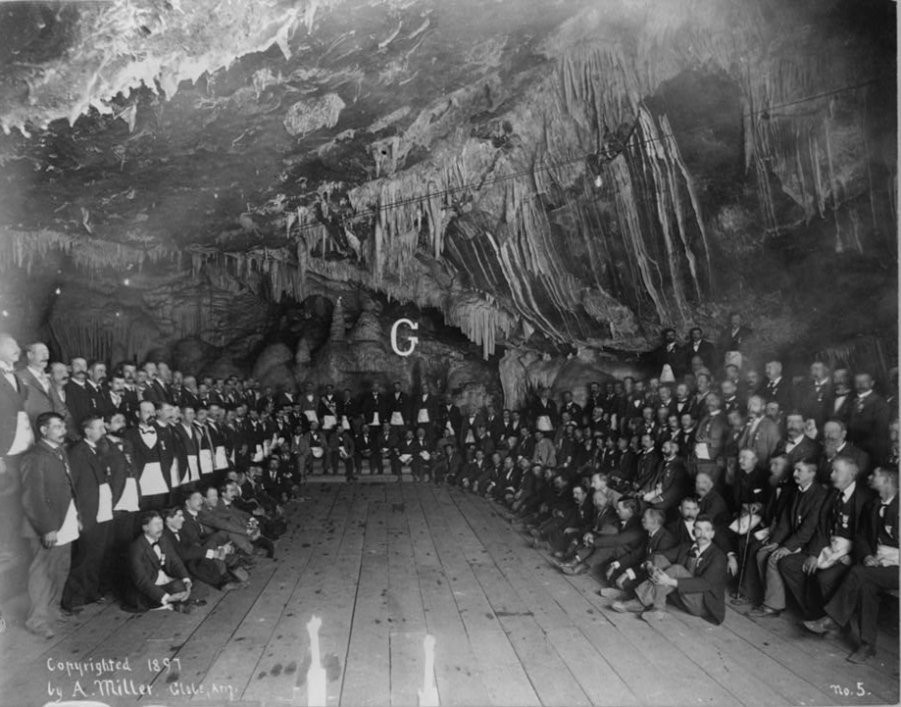
Freemasons meeting in the Copper Queen Mine, Bisbee, Arizona Ca. 1897. Though many important specimen-producing mines and districts such as this have been closed for many years, they are still world a visit and may occasionally yield great minerals for sale at fair prices. (Photo © Library of Congress)
- Be Knowledgeable. This may seem self-evident or at worst patronizing to say, but knowledge truly is power. Nobody, even the most seasoned, well-traveled dealer or Ivy League mineralogy PhD can know everything about minerals, so it’s best to find what really gets you excited and specialize. Perhaps that specialization is regional – after having lived in Colorado for 10+ years I now enjoy collecting and learning about minerals from my adopted state. One could also specialize in one mineral – numerous incredible collections of just quartz, calcite or perhaps tourmaline have been assembled. Chemistry is another great way to build an important specialized collection, whether it be silicates or sulfides. Some people just love all minerals- I confess I am part of this group. For us, knowledge is acquired in bits and pieces, but constantly, and always about something different depending on what we’re been able to buy or collect. Again, the internet age has democratized the education process in new and exciting ways. While an advanced degree in geosciences and a large library of mineral books, journals and other publications might have been the traditional avenue to become a ‘mineral connoisseur’, this same knowledge can now be acquired online if one is patient and committed. I know of a number people within the mineral community whose ‘formal education’ may have stopped after high school but whom possess a breadth and depth of knowledge on minerals which most PhD museum curators would envy. The pursuit of knowledge is not just pedantic either- the more you know about minerals, the more you are likely to recognize a great deal hiding under a mineral dealer or collection heir’s nose, or be able to confidently purchase an unlabeled specimen at a good price which less experienced collectors might shy away from because you know the locality and provenance.
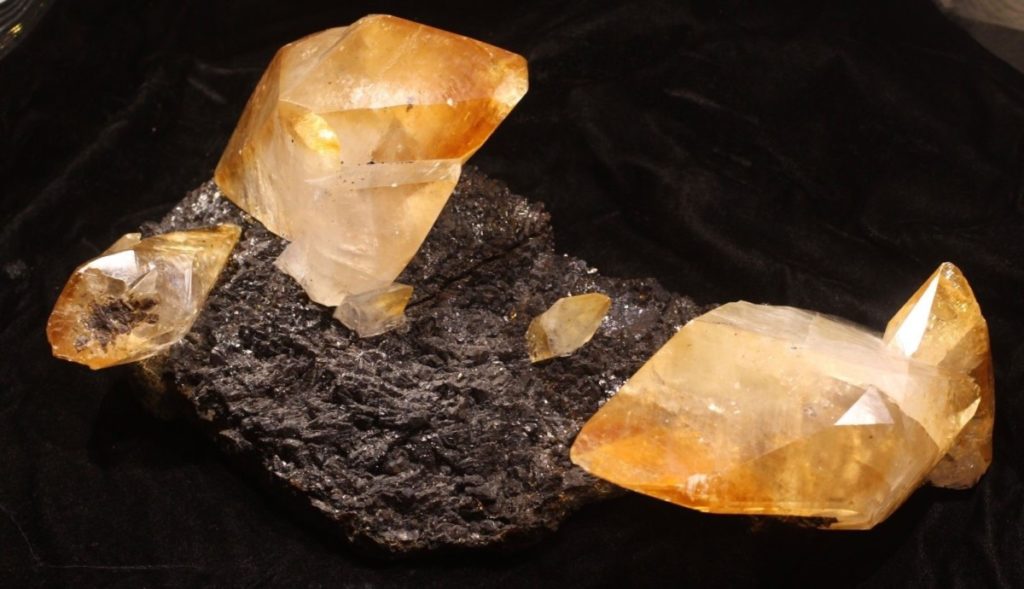
Fine group of golden calcite crystals on sphalerite from the Elmwood Mine, Tennessee USA ~38 cm across, acquired by the author in 2015 while volunteering to help set up a local museum sale- the specimen was part of the sale materials.
- Be Fair. The mineral community is exactly that- a group of people whose shared interests, passions and obsessions unite them under a common banner. More so than collecting fine art, or stamps, or baseball cards, I would argue, mineral collectors are tight-knit and often nurturing and supportive of each other’s growth as collectors and scientists. As members of a community many in the ‘general public’ would find strange or even pointless, we have developed a certain ‘outsider perspective’ which we combat using the strength of our own community. As such, fairness and honesty are critical in being able to acquire good minerals on a budget. The cynic might argue here that the previous suggestion of ‘recognizing a great deal hidden under a dealer or collection heir’s nose’ requires a certain dishonesty or swindling, but I believe that so long as the collector or dealer operates with integrity, ‘getting a bargain’ does not have to equal ‘ripping someone off.’ Yes, scour the world for former rockshops-turned-garage sales piled with flats in someone’s backyard holding treasures only you can identify. Yes, develop relationships with older or more experienced collectors not only because you can absorb their knowledge but because our time on earth is finite and one day you may be able to acquire those minerals for your own collection. Just do so fairly. The mineral community is surprisingly small for how global it has become, and the flipside to the interconnectedness of our community is that when you lie, steal, or treat people unfairly, your reputation will undoubtedly proceed you. I have been amazed at how when I meet someone in the mineral world and have to mention only the most peripheral details of a certain individual before the person I’m speaking with knows exactly which ‘bad apple’ I’m talking about.
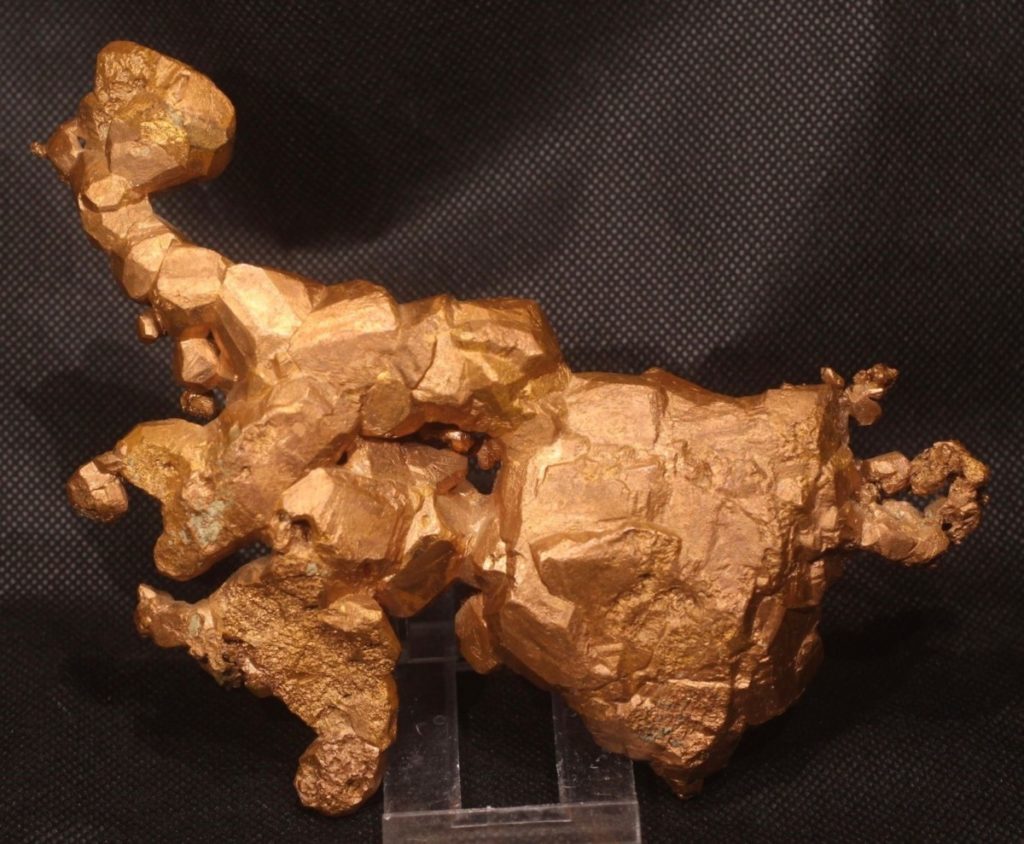
Large group of native copper crystals from the New Cornelia Mine, Ajo, Arizona, 16.5 cm across; acquired by the author from the heirs to a small collection whose gemstone portion a friend had helped appraise.
- Be Creative. This is perhaps the most difficult piece of advice to give succinctly. For those with lots of money, the flow of ‘good rocks’ usually points towards them anyways, and creativity may revolve more around what to acquire and when versus how. For the rest of us the ‘how’ question is usually central, and revolves around money most of the time. Today, however, between the internet, mineral shows, clubs, museums and events across the world, and our increasingly globalized society, there are many ways to acquire good minerals at modest prices. Cultivating relationships is crucial. Humans interaction is driven primarily by psychology and collecting minerals is no different. Gaining trust and building rapport, while perhaps not resulting in immediate gains to your collection, are important in acquiring good minerals at prices you may not be able to find at a show or online. Browsing venues like eBay, Craigslist, and local garage sale listings may also not yield immediate returns to your collection, but most of us who have been collecting for some years have at least one story of a great “sleeper” specimen or collection acquired in this way. Finally, consider being a dealer yourself. No, I don’t mean quitting your ‘day job’ (though some have ended up doing this in the end) and hustling rocks for your daily bread. I consider a dealer to be anyone who has sold a specimen at some point in their life, which includes most of us.
Buying ‘in bulk’ not only can get you a deal on an individual specimen you want for your collection which might be out of your reach otherwise, it can establish valuable relationships with suppliers and collectors that will pay for themselves many times over in the future. Selling minerals can be a great way to finance your future acquisitions, as well as connect on a new level with the mineral community. Finally, be creative with how you ‘stretch your dollar.’ Perhaps you really want a good Sweet Home rhodochrosite for your collection and are dismayed to find that even a thumbnail which looks like it took a trip through the rock tumbler will now run you a thousand dollars or more. But, you have a friend who has a friend who has some Colorado minerals for sale. They are only a small part of a once great collection she has which she has sold to various dealers over the years. You meet at a mineral show and strike up a friendly conversation that leads to a casual friendship. One day, she invites you over to her house and shows you a flat of minerals she has- some pyrites, a calcite or two, some nice thumbnails, and then a very fine Sweet Home rhodochrosite. Bingo! She discloses she wants a fairly large sum of money for the specimen, but after researching the locality extensively, you are now knowledgeable enough to know it is a good deal and one you are unlikely to find again. You take out a small loan from a friend to acquire the lot from her, sell the other specimens, pay back your friend, and the Rhodo is now yours for a modest end-cost. A lot of work, you may say, but to myself and many others this is part of the fun of the mineral world, the ways we build community and find clever and creative ways to add to our never-ending collections.
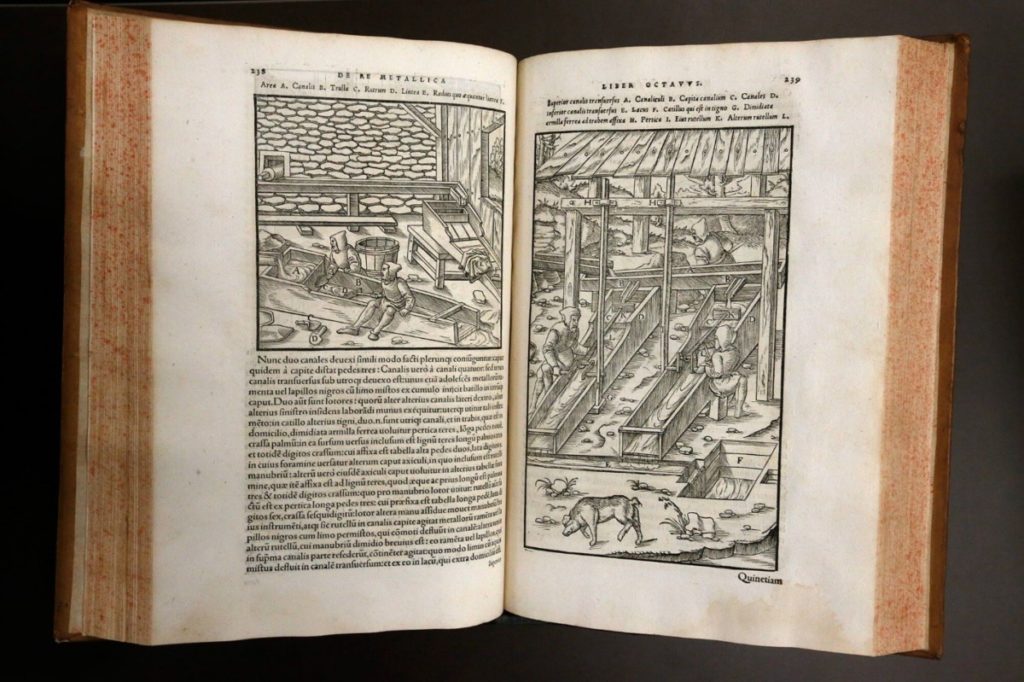
“De Re Metallica” by Agricola, published in 1556, at the time the leading source of knowledge on minerals and mining. While texts like this are still critical in building a knowledge of minerals, the internet has become just as important. (Photo © Drek Gee/Buffalo News)
In closing, I firmly believe we live in the “Golden Age” of mineral collecting. Never before has the pace of mining and discovery been so synchronized with ease-of-access and the interconnectedness which defines our global mineral community. Yes, prices for fine minerals, particularly at the top of the spectrum, have risen dramatically over recent decades, but this is turn has popularized collecting to a new group of privileged people who in turn support and justify specimen mining operations and specimen recovery from active mines around the world. This may be one facet of life where ‘trickle-down economics’ actually has some effect. One can visit a mineral show in Tucson, Denver or Munich and in an afternoon be transported around the world to what is new (sometimes very new) in the mineral world, and often have the luxury or ‘price comparison’ between dozens of dealers offering specimens from the same find or pocket until you find the specimen that speaks to your aesthetics and your budget. Most of all, stay inspired, stay excited, and know that staying within your budget as a collector does NOT mean staying at the same level of minerals or collecting!
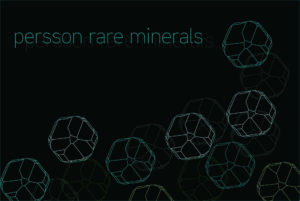 Special thanks to Phil Persson for giving us permission to post this great article!
Special thanks to Phil Persson for giving us permission to post this great article!